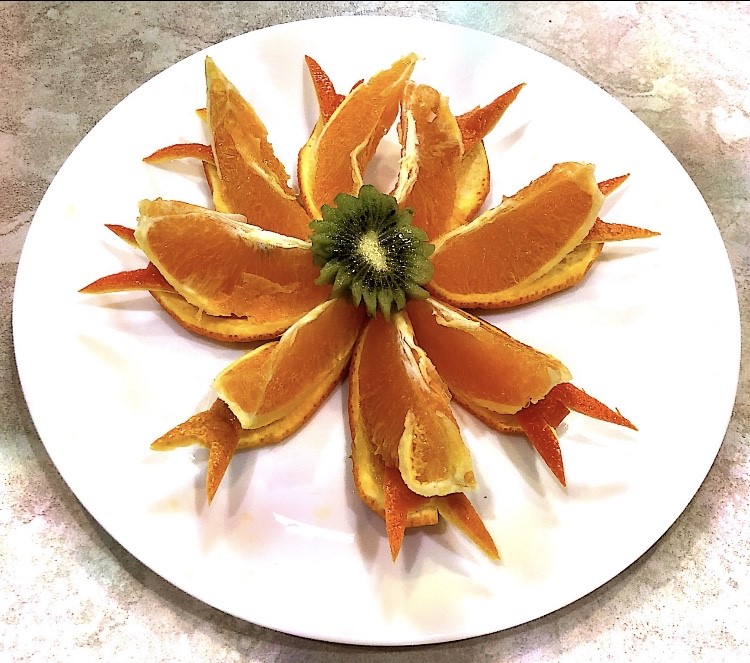
The origins of fruit art
By Morgan Hannah, Life & Style Editor
Have you ever wanted to impress your friends in an artistic, fresh, and childishly charming way? Have you ever wanted to stand out and be avant-garde? Have you ever wanted to play with your food… in a meaningful way? If you said yes to any of these questions, you need to grab yourself a handful of ripe—but not too ripe—fruits and a paring knife pronto! It’s time, ladies and gentlemen, to bring back fruit art.
What is fruit art? Fruit art is the practice of carving fruits (and veggies) and is a well-known technique—especially in Asian countries. It is particularly popular in Thailand, China, and Japan. Many fruits are used in this form of art—the most prominent being watermelons, apples, strawberries, pineapples, and cantaloupes. Like the majestic pumpkin from the once-a-year spooky season of Halloween, carving faces and funky designs into the flesh of a pear or the classic navel orange is a fantastic way to have your fun and eat it too!
There are many stories fighting to be the origin of fruit art, the most popular being that of the Loi Kratong festival in 14th century Thailand. Rafts were decorated using several objects including banana leaves, flowers, and thanks to one particular woman, fruit! She carved a vegetable flower using a real flower as a template, she then carved a bird and placed it next to the flower. Using these carvings, her raft stood out among the rest. The king loved the fruit art so much that he declared her raft the winner.
However, it has been said that this unusual form of art dates even further back as well! Nowadays, despite the uncertainty of the origin of fruit art, it is a unique, beautiful, and highly circulated form of art that can be found all over the world. Whether in the form of fruit bouquets, art exhibits, shows—or simply at home to impress guests, fruit art ranges from easy to masterful and is deliciously exciting art…that you can eat!
Navel orange flower tutorial
Slice a navel orange in half, then cut it into fourths and continue until you have small slices. Then cut half of the fruit away from the peel carefully. Make two incisions in the separated side of the peel like fish fins. Then tuck the end of the separated slice underneath the attached fruit side. Do this with all the orange slices and put them together in a circle.

